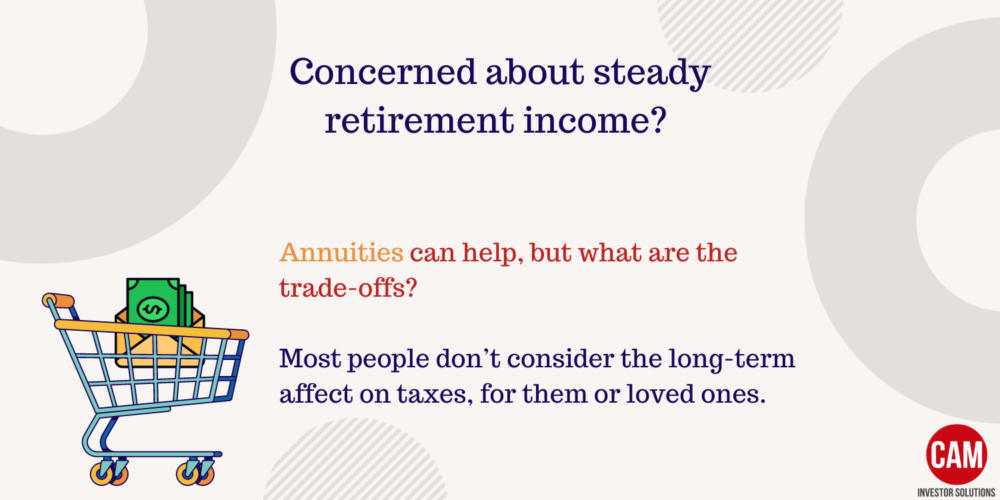Are you a W-2 employee but your employer doesn't offer a 401(k) plan and you want to save for retirement? Read about your options.

Missed RMD Penalty
Retirement accounts, like IRAs and 401(K)s, are pretty essential these days to provide income during your retirement years. But they can also be a tax burden if you don’t necessarily need to withdraw cash from them and you’re over the age of 72 (or 73 under the new SECURE 2.0 Act signed into law 12/29/2022). Once you reach this age, you must withdraw a minimum required distribution (RMD) amount each year per IRS rules. If you don’t and the RMD is missed, there is a penalty imposed by the IRS. So what is that penalty? How can you avoid it? And is it possible to get it waived?
What’s the RMD penalty?
The RMD rule is imposed by the IRS to discourage people from using retirement accounts as a means to avoid paying taxes. Account holders of an employer-sponsored retirement plan, traditional IRA, SEP, or SIMPLE IRA must start withdrawing cash from their account by April 1st, following the year they reach age 73.
The exact amount of the RMD is determined by dividing the retirement account’s prior year-end (12/31/202X) fair-market value by the applicable distribution period or life expectancy. You can find a worksheet on the IRS website to help determine what that exact amount is. Your custodian, where your account is held, should also be able to tell you what your RMD amount is.
There is no penalty for taking out MORE than the RMD amount. The penalty is for not taking out the full RMD amount. Prior to 2023, a missed RMD could incur an IRS penalty equal to 50% of the missed amount. However, the IRS usually waived the penalty if you took the RMD and filed Form 5329 (with a reasonable explanation). The explanation should include how the mistake occurred, what you did to fix the mistake, and how you plan to ensure it doesn’t reoccur. When these procedures were followed, the IRS often excused the 50% penalty.
The missed RMD penalty was reduced by the SECURE 2.0 Act from 50% to 25% starting in 2023. Even better, if the mistake is corrected in a timely manner, the penalty is further reduced to 10%. A timely correction generally means withdrawing the missed RMD and filing Form 5329 as soon as possible following the year the RMD was missed.
Can the penalty still be waived?
With the new IRS guidelines it was not clear if the penalty would continue to be waived if someone follows the same procedures that had previously worked. Some speculated that the new ability to reduce the penalty from 25% to 10% by a timely correction meant that the IRS would no longer excuse the penalty entirely.
However, that doesn’t seem to be the case. The IRS publishes an explanation of the RMD rules – “Retirement Plan and IRA Required Minimum Distributions FAQs” – on its website. The publication has always included the following FAQ on waiving missed RMDs:
“Q9. Can the penalty for not taking the full RMD be waived?
Yes, the penalty may be waived if the account owner establishes that the shortfall in distributions was due to reasonable error and that reasonable steps are being taken to remedy the shortfall. In order to qualify for this relief, you must file Form 5329 and attach a letter of explanation. See the Instructions to Form 5329.”
Internal Revenue Services (IRS)
After the passing of the SECURE 2.0 Act, the IRS updated certain FAQs to incorporate the new rules. Interestingly enough, the IRS did not make any changes to Question 9.
This is not official IRS or tax advice, however, it seems very likely that the IRS will continue to accept requests to waive the missed RMD penalty when you take the RMD and file Form 5329 with a reasonable cause explanation. And even if they don’t waive the fee, it doesn’t hurt to file Form 5329 to reduce the penalty from 25% to 10%. Either of these penalties are a big improvement from the 50% fee previously imposed!
Income planning
If you want to avoid RMDs all together – diversifying where your retirement money is held can be extremely useful. With the passing of the SECURE 2.0 Act all Roth accounts (IRAs and 401(K)s) no longer have RMD requirements. And of course brokerage accounts don’t have RMDs either. By placing or moving your cash and investments into accounts like these, you’re able to have complete control of when and how much cash to withdraw. This gives you more control of your tax bracket and bill.
Knowing how much to withdraw and from which accounts during retirement can be very crucial to your financial success. Working with a professional investment advisor can help provide you with an income withdrawal strategy. These strategies can reduce taxes, ensure the correct assets are in the right accounts and aim to provide enough income for your lifetime. Want a second opinion on your income withdrawal strategy? We’d love to take a look!
Disclosure
M & A Consulting Group, LLC, doing business as CAM Investor Solutions is an SEC registered investment adviser. As a fee-only firm, we do not receive commissions nor sell any insurance products. We provide financial planning and investment information that we believe to be useful and accurate. However, there cannot be any guarantees.
This blog has been provided solely for informational purposes and does not represent investment advice. Nor does it provide an opinion regarding fairness of any transaction. It does not constitute an offer, solicitation or a recommendation to buy or sell any particular security or instrument or to adopt any investment strategy.
Past performance is not a guarantee of future results. Diversification does not eliminate the risk of market loss. Tax planning and investment illustrations are provided for educational purposes and should not be considered tax advice or recommendations. Investors should seek additional advice from their financial advisor or tax professional.



